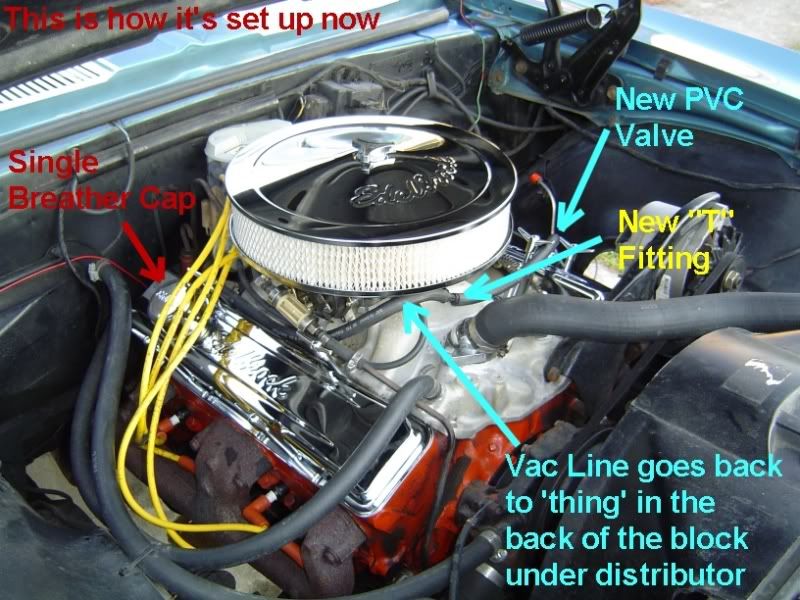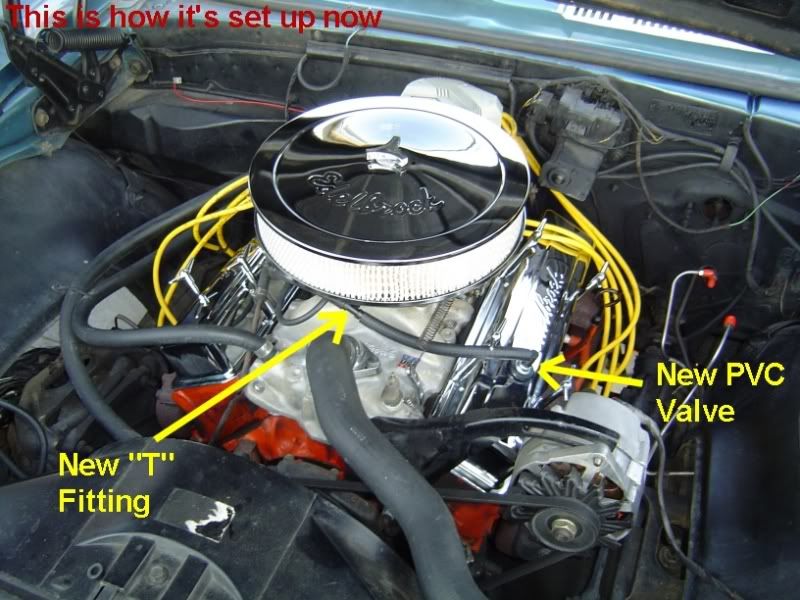I feel a little dumb about asking what I'm about to ask, but I need some help from folks who know their way around an original 327. I've included pictures below to aid in what I'm talking about.
When I bought my 67 (with original 327, aftermarket Edlebrock Performer Intake Manifold and Carburetor) whoever had done the motor work had done some weird stuff to it. The plain jane chrome valve covers they used had a total of four breather caps, and no PCV set up. The thing was slowly blowing oil all over the valve covers, as I suspect the crankcase has too much pressure in it, and fine particles of oil were getting all over. I was constantly having to wipe it down. Also (see pictures below), there was this 'thing' that I would like to assume is some type of original PCV valve, at the back of the engine near the distributor. The vac line coming off of it went to the main vac port on the carb. Well, I decided to figure out what was going on, and dig into this a little bit.
So, I pulled off the main vac line to the 'thing', and discovered that someone had plugged the main vac tube in the carb with a sealant, and in the hose attached to it, had stuffed a tire valve cap and more sealant. Obviously to prevent it from doing what it was suppose to do. I figured this was the source of my problem. So I set out to buy new valve covers, with only two holes (one in each cover for for breather caps, and PCV valve) instead of the four I had. I got them installed, put on a new Edlebrock breather cap in one, and in the other, I hooked up a PCV valve and ran it to a 'T' connector at the main vac port on the carb, and hooked it up. On the other end of the "T" I hooked up that original vac line that was clogged and going to the 'thing' at the back of the engine. (Yes, I cleaned out the tube, and cut off about 2 inches of vac line to get out the sealant and the valve cap). I also took the time to change my spark plugs (the old ones came out, did not look completely 'normal', and appeared to be slightly 'wet', with a mild build up on the 'ground' (side) electrode). I gapped the new ones at .035).
Anyway, the engine is burning oil... slightly. I can see it exit each exhaust pipe... so whatever is causing the oil to burn is happening on both sides of the engine (as I have a dual exhaust system). I have not done a compression test yet, but am about to. (Side note, any idea of what kind of compression I should be seeing in this stock 327 on each cylinder?)
I figured the most likely culprit of this oil situation is the incorrect PCV set up... and before I go crazy, I'd like to know everything I'm dealing with... and for starters, WHAT is this 'thing' in the back of the engine block near the distributor? I don't believe it to be a oil pressure sending unit...
Let me add, I'm a novice when it comes to motors. I can do just about anything else with this car, and understand the fundamentals of engine operation, but am admitting to needing help with the more intimate operations of an engine, and this problem.
Any constructive help/criticism would help me. Thanks for your time everyone...
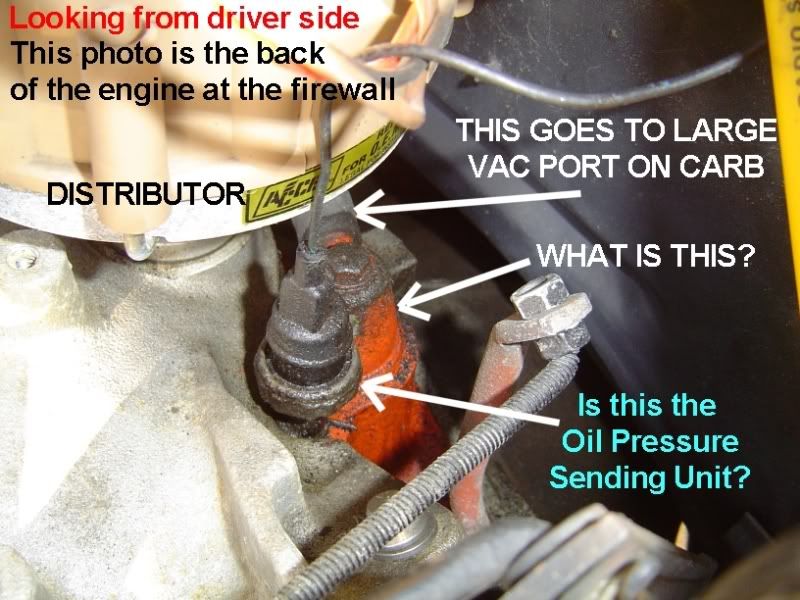
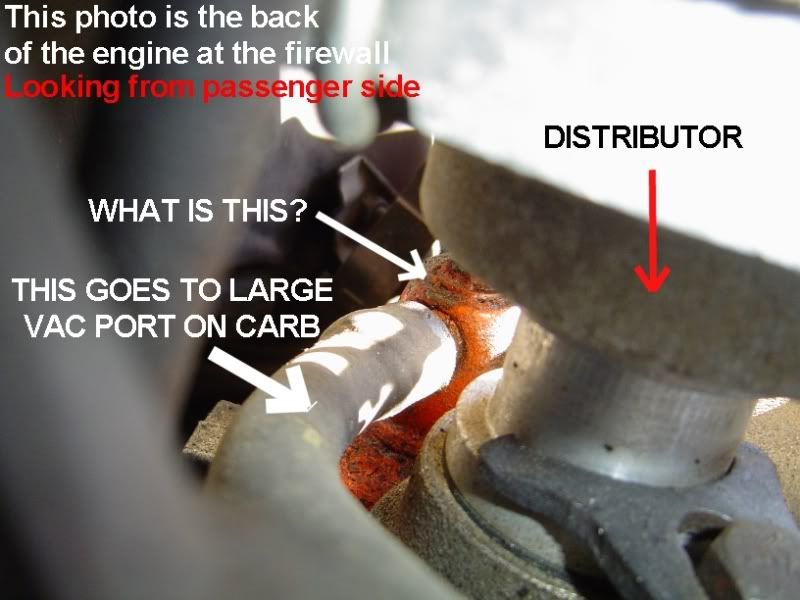
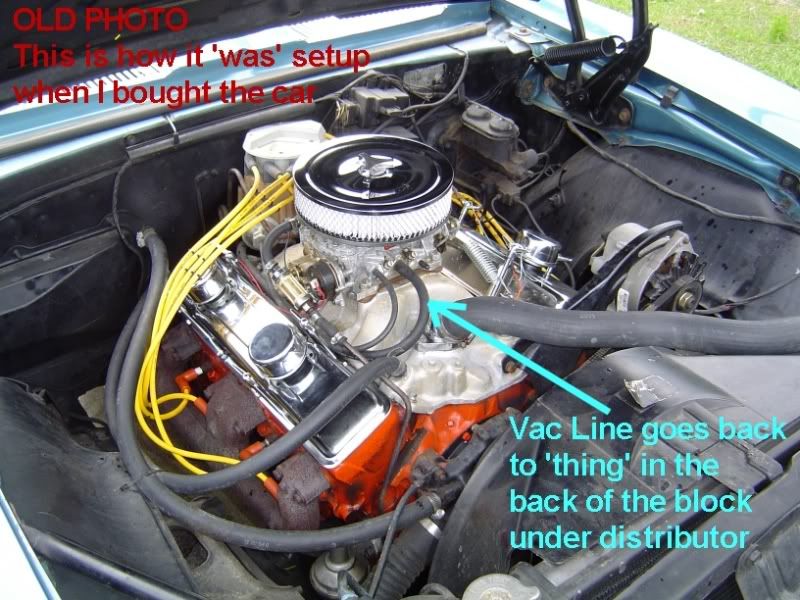
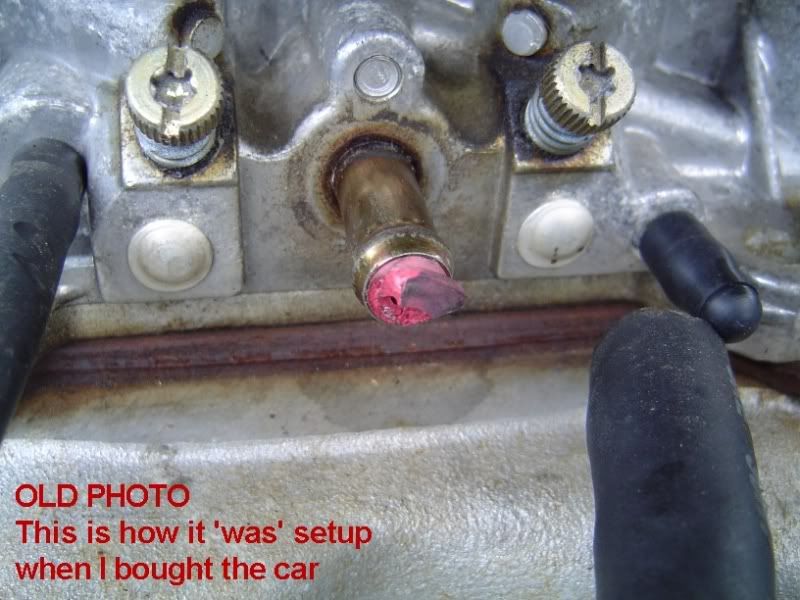
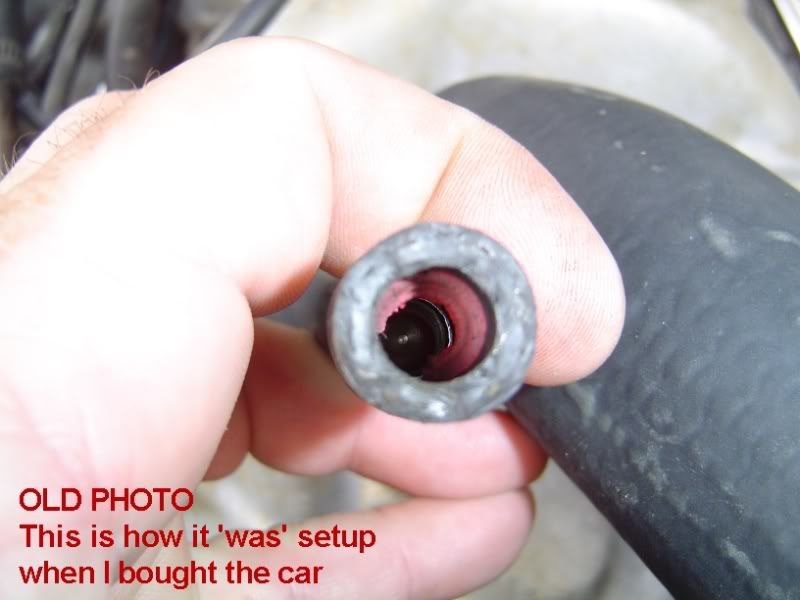 and I have it set up now...
and I have it set up now...